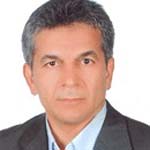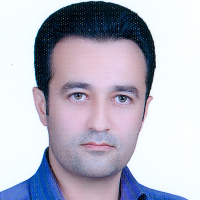Digital Mapping of Surface and Subsurface Soil Organic Carbon and Soil Salinity Variation in a Part of Qazvin Plain (Case Study: Abyek and Nazarabad Regions)
Knowledge of the spatial distribution of soil salinity and soil organic carbon (SOC) leads to obtaining valuable information that is effective in decision-making for agricultural activities. More than a third of the world's land is affected by salt, which threatens the growth and production of crops, and prevents the development of sustainable agriculture. The high electrical conductivity (EC) content in soils poses significant challenges in arid and semi-arid regions, greatly impacting agricultural production. Saline and sodic soils often exhibit high levels of sodium which is a key characteristic. The presence of sodium ions leads to the destabilization of soil aggregates and the dispersion of soil particles resulting in the closure of soil pores. Consequently, unfavorable changes occur in the soil physical, chemical, and biological properties increasing its susceptibility to water and wind erosion. Additionally, high sodium levels can lead to the decomposition of soil organic carbon (SOC). SOC is crucial for water retention, cation exchange, and nutrient availability, making its reduction in agricultural soils a significant threat to sustainable soil management. Therefore, the investigation of soils in terms of EC and SOC contents and their spatial distribution is of great importance to support decision-makers in agricultural development planning to reduce challenges related to food security in arid and semi-arid regions.
This study was conducted with the aim of investigating the EC and SOC in topsoil (0-30 cm) and subsoil (30-60 cm) layers using four machine learning (ML) algorithms namely, random forest (RF), decision tree (DTr), support vector regression (SVR) and artificial neural network (ANN) performed in Qazvin Plain. The study area includes a part of agricultural lands and natural areas of Alborz and Qazvin provinces, between the Nazarabad and Abyek cities in Iran. This region with an area of 60,000 hectares is located at latitude 35° 54´ to 36° 54´ to the north and 50° 15´ to 50° 39´ to the east. This research was carried out in four stages including (i) soil sampling and measuring the physical and chemical properties of the soil and preparation of environmental covariates from a digital elevation model (DEM) with spatial resolution 12.5 m and Landsat 8 satellite imagery with spatial resolution 30 m by SAGA GIS and ENVI software, (ii) spatial modeling of soil EC and SOC in the topsoil and subsoil layers by the RF, SVR, ANN, and DTr ML algorithms, (iii) evaluating the efficiency of the ML algorithms and determining the relative importance of environmental covariates, and (iv) preparation of spatial prediction maps of EC and SOC in the topsoil (0-30 cm) and subsoil (30-60 cm) layers in the study area.
The result of the spatial prediction maps of EC showed that the studied area has non-saline to very saline soils up to a depth of 60 cm. It is also possible that the EC equivalent shows a decreasing trend in soil salinity with a depth from 6.05 to 5.55 ds/m from the topsoil to the subsoil layer. The highest amount of SOC was observed in the surface layer equal to 3.3%. Globally SOC content decreased from the surface (average of 0.84%) to depth (average of 0.4%). The high spatial variability of SOC showed that the soils of the study area are affected by management activity. Environmental covariates were extracted as a proxy of topography and remote sensing indices including elevation, diffuse Insolation (Diffuse), Multi-Resolution Index of Valley Bottom Flatness (MrVBF), Normalized Differences Vegetation Index (NDVI), SAGA wetness index (SWI) and wind Effect (WE) were used as representatives of soil formation factors. The topography parameters, including the elevation, diffuse insolation, and Multi-Resolution Index of Valley Bottom Flatness, were most closely related to EC and SOC variations in each topsoil and subsoil layer. Elevation can be justified around 50% and 35% of EC and 28.56% and 29.47% of SOC variations in the topsoil and subsoil layers, respectively, followed by the diffuse variable can succeed to justified 19.7% and 25.1% of EC and 27.28% and 27.67% of SOC spatial variations in the topsoil and subsoil layers, respectively.The results confirmed that the RF was recognized as outperforming the ML model for predicting EC in the topsoil (R2 =0.74, RMSE =0.36, and nRMSE= 0.07), as well as predicting SOC in topsoil and subsoil layers (R2= 90 and R2=0.80), followed by the DTr for predicting EC (R2 0.77, RMSE/0.9, and nRMSE 0.17) in the subsoil layer in comparison other models.
The RF (Random Forest) and DTr (Decision Tree) models incorporating topographic parameters demonstrated satisfactory accuracy in predicting the variation of topsoil and subsoil electrical conductivity (EC) and soil organic carbon (SOC) in the study area. Topography plays a crucial role in soil formation, and elevation-based topographic attributes are commonly used as key predictors in digital soil mapping projects. The variability in topography influences water flow and sedimentation processes which, in turn, affects soil development and the spatial distribution of soil properties. The resulting soil maps can be valuable tools for decision-making programs related to soil management in the region.
- حق عضویت دریافتی صرف حمایت از نشریات عضو و نگهداری، تکمیل و توسعه مگیران میشود.
- پرداخت حق اشتراک و دانلود مقالات اجازه بازنشر آن در سایر رسانههای چاپی و دیجیتال را به کاربر نمیدهد.




